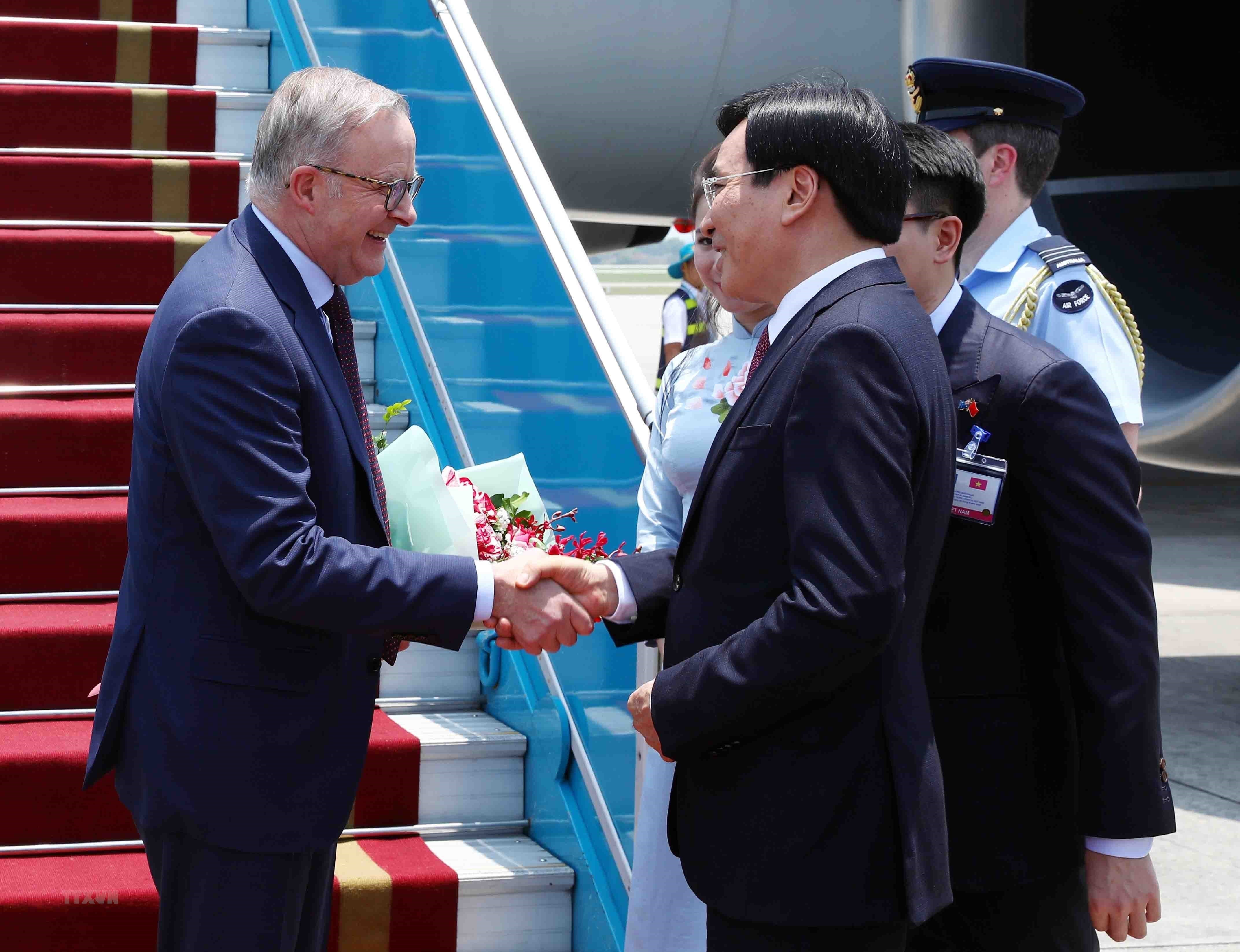Viet Nam-Australia trade has experienced huge growth in recent years. With the Australian Prime Minister in Hanoi to talk trade over the weekend, we thought we’d take a quick look at how trade between these two countries is developing.
Australian Prime Minister Anthony Albanese was in Hanoi over the weekend to talk trade with Vietnamese Prime Minister Pham Minh Chinh. The two countries have had a long and prosperous relationship for almost 50 years as a result of complementary competitive advantages: Australia’s natural resources and Viet Nam’s low-cost labor.
But the relationship between these two countries goes well beyond trade. There is a huge Vietnamese diaspora in Australia, which has had a potent influence on Australia’s development as a nation.
Furthermore, contributing to the development of Viet Nam has been a priority of successive Australian governments. During his recent visit, the Australian prime minister pledged AU$105 million (US$69 million) to Viet Nam’s clean energy transition. This was well received, with Australian coal a major contributor to Viet Nam’s greenhouse gas emissions – 17 million tons of coal imported into Viet Nam in 2022 came from Australia.
This cooperation has been made possible by the outward-looking approach that both nations have toward international trade, exemplified by their commitment to a range of free trade agreements (FTAs).
Viet Nam-Australia trade relations
Trade between Australia and Viet Nam is governed by three key FTAs:
- The Comprehensive and Progressive Trans-Pacific Partnership Agreement (CPTPP)
- ASEAN – Australia – New Zealand (AANZFTA)
- Regional Comprehensive Economic Partnership (RCEP)
Furthermore, Viet Nam and Australia have both signed up to the Indo-Pacific Economic Framework (IPEF). Details of where this agreement may lead are still unclear but generally, it shows a like-minded approach to international trade.
Australian FDI in Viet Nam
So far this year, Australian firms had started 12 new projects in Viet Nam and contributed US$19 million to Viet Nam’s FDI inflows. This brings the all-time total Australian FDI in Viet Nam to US$2 billion across 596 projects. These investments have been in fields from banking to education to manufacturing.
Australia’s exports to Viet Nam
At the beginning of the COVID-19 pandemic, the then Australian Prime Minister, Scott Morrison, publicly called for a full investigation into the origins of the virus. This was not well received in China, which responded by applying trade restrictions on a number of Australian imports. As a result, Australian producers had to search out other markets and subsequently found a willing market for a broad range of Australian goods in Viet Nam.
Australia’s main exports to Viet Nam

Viet Nam’s exports to Australia
As a manufacturing powerhouse, Viet Nam exports a broad range of finished goods to Australia. The relatively low wages in Viet Nam compared to Australia make Viet Nam’s manufactured goods much better value for Australian consumers – compared to products made Down Under.


The future of trade between Viet Nam and Australia
Moving forward, the long and fruitful relationship between Australia and Viet Nam should provide a stable foundation for greater cross-border trade and investment.
Furthermore, the CPTPP and RCEP will continue to remove trade barriers, which should see even more benefits realized for both parties.
Moreover, the unpredictable nature of China’s trade policy toward Australia will likely see Australian exporters continue to strengthen their bonds with other regional markets like Viet Nam. With this in mind, bilateral trade between Australia and Viet Nam is expected to continue growing well into the long term.
